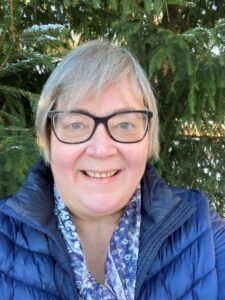With new methods of data assimilation, we can make better use of all the valuable information available about the forests. In 2024, Nordic research in this field was strengthened when Finland joined the collaboration between Mistra Digital Forest and its Norwegian sister programme. Now these countries will collaborate in order to strengthen the research area within the EU.

Göran Ståhl, SLU. Photo: SLU.
The forestry sector is awash with remote sensing data, but much of it is never put to use. With the help of what is known as data assimilation, more data can be utilised to improve decision support in forest planning. Mistra Digital Forest and its Norwegian counterpart SmartForest have been working together for some years in order to strengthen research within data assimilation, and to develop systems that integrate different types of remote sensing data. In 2024, the Finnish sister programme UNITE joined the Nordic collaboration as well.
– Instead of using decision support that relies solely on data from one source or from one point in time, data assimilation allows us to integrate multiple data sources, and data from multiple points in time. This results in decision support that makes better estimates of the current situation, and that enables more accurate future forecasts, says Göran Ståhl, Professor of Forest Inventory at SLU, who is involved in the collaboration through Mistra Digital Forest.
Finnish UNITE: ‘Looking forward to deepening our co-operation’

Annika Kangas. Photo: private.
For example, data assimilation allows decision support based on laser data from the national laser scanning programme, which is only carried out at several-year intervals, to be supplemented by optical satellite images which come in large quantities every single year.
– In order to make informed decisions, we need more accurate and up-to-date forest information. This is where data assimilation can provide a solution, and with our combined efforts we are accelerating this development. I’m looking forward to deepening our co-operation and to continuously sharing experiences and know-how, says Annika Kangas, Professor at the Finnish National Forest Research Institute, who is involved in the collaboration through UNITE.
SmartForest representative Terje Gobakken, Professor of Forest Remote Sensing and Planning at the Norwegian University of Life Sciences, also sees the benefits of the co-operation:

Terje Gobakken. Photo: NMBU
– Our three countries have very similar forest conditions, which lays solid foundations for collaboration, where we benefit in particular from the sharing of research expertise and data. This is an extensive and advanced field that requires significant resources.
Increasing knowledge within the EU
Models based on remote sensing data have to be adapted in order to avoid being misleading. This is an issue that our collaboration is raising awareness of, among researchers and policy makers in the EU. Almost all assessments of the condition of a forest based on remote sensing data contain systematic errors that must be taken into account, such as the fact that biomass is often overestimated in younger forests and underestimated in older forests.
– The Nordic countries have made considerable progress in research in this area, co-operation strengthens our resources and makes us more visible. Through joint efforts, we can make better use of remote sensing data within the forest sector, says Göran Ståhl.